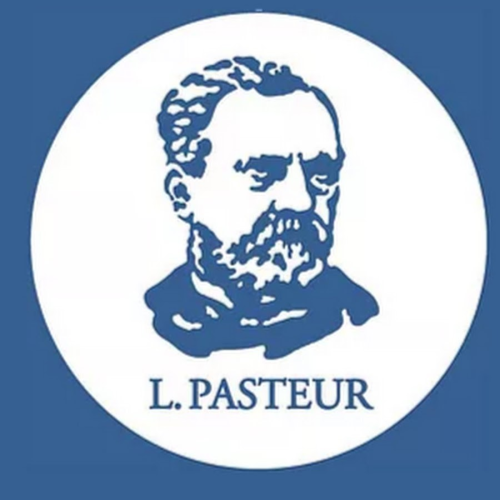Laboratory of Epidemiologically and Socially Significant Infections
Head of Laboratory
Oleg B Ogarkov
Publications
92
Citations
644
h-index
13
Authorization required.

The main activity of the division is epidemiological and microbiological studies of topical infections from the population level to the level of individual organisms. In addition to the traditional directions for the laboratory — "epidemiology of socially significant infections" and "molecular epidemiology of tuberculosis", the laboratory team conducts research in a number of promising areas, such as "research on the pharmacokinetics of anti-tuberculosis drugs", "search for new biomarkers of topical infectious diseases using genome-wide sequencing", "studies of lung microbiomes in the tuberculosis process".
- Next Generation Sequencing (NGS)
- Enzyme-linked immunosorbent assay (ELISA)
- Real-time PCR (qPCR)
- Working with prokaryotic cells: cultivation, transformation, working with phages
- Creation of genetically engineered structures for the expression of target proteins
- Western blot
- Cloning
- Sequencing
- Gel electrophoresis
Oleg Ogarkov
Head of Laboratory

Evgeniy Savilov
Principal researcher

Svetlana Zhdanova
Leading researcher

Vyacheslav Sinkov
Senior Researcher

Ilya Kondratov
Researcher
Research directions
A comprehensive approach to molecular diagnostics of drug-resistant and extensively drug-resistant tuberculosis with the development of an information-analytical system for personalized medicine and epidemiological surveillance
+

Mycobacterium tuberculosis is the most lethal infectious agent. In recent decades, due to significant advancements in molecular biology, our understanding of the mechanisms of M. tuberculosis resistance to key anti-tuberculosis drugs has expanded through the identification of specific gene mutations associated with resistance to first-line drugs. One of the most promising approaches for genetic determination of resistance to anti-tuberculosis drugs is whole-genome sequencing (WGS) and subsequent automated data interpretation using software packages. The project tasks include:
Automation of the analytical process for identifying significant mutations for pyrazinamide, linezolid, delamanid, and bedaquiline during Sanger sequencing;
Development of a panel of primers and TaqMan probes for PCR-RFLP identification of major (epidemic) genotypes of M. tuberculosis circulating in Northern Eurasia;
Investigation of the role of satellite anaerobic microbiota in the tuberculosis foci in the survival processes of M. tuberculosis in an in vitro model.
Biodiversity of non-tuberculous mycobacteria obtained from cultured strains and clinical specimens from patients in European and Asian regions of Russia
+

Currently, 200 species of NTM are described as constantly present in the environment. It can be expected that the expansion of the immunocompromised population associated with the HIV pandemic will lead to the emergence of new etiological agents of diseases belonging to the genus Mycobacterium. On the other hand, the presence of NTM in sputum does not always indicate the presence of pulmonary mycobacteriosis and may be due to asymptomatic colonization of the respiratory tract. The project hypothesis suggests that the species composition of NTM capable of causing mycobacteriosis in the Asian territories of Russia with a high prevalence of HIV infection (Irkutsk region, Krasnoyarsk and Perm territories) may significantly differ from those described in the European part of the country and other regions of the world. It is assumed that mycobacteria isolated from visceral organs not in contact with the environment (blood, lymphatic organs, etc.) may have specific virulence determinants that increase their invasiveness and/or pathogenicity. The project aims to: assess the species and intraspecies spectrum of NTM isolated from various clinical specimens from HIV-infected and other immunocompromised patients in European and Asian regions of Russia; identify potential genes contributing to increased invasiveness and/or virulence of the studied clinical strains of NTM isolated from internal organs not in contact with the environment; evaluate the spectrum of antibacterial drugs capable of acting on strains from visceral organs not in contact with the environment; develop a set of PCR tests for early specific indication of mycobacterioses and differential diagnosis from the tuberculosis pathogen in clinical material.
Publications and patents
Found
Nothing found, try to update filter.
Анна Александровна Вязовая, Вячеслав Владимирович Синьков, Оксана Александровна Пасечник, Мария Владимировна Бадлеева, Полина Андреевна Хромова, Ирина Владимировна Ярусова, Светлана Николаевна Жданова, Алена Андреевна Герасимова, Наталья Сергеевна Соловьева, Вячеслав Юрьевич Журавлев, Олег Борисович Огарков, Игорь Владиславович Мокроусов
RU2768021C1,
2022
Олег Борисович Огарков, Надежда Павловна Перетолчина, Сергей Игоревич Малов, Елизавета Андреевна Орлова, Лилия Александровна Степаненко, Полина Андреевна Хромова
RU2756203C1,
2021
Lab address
Иркутск, ул. Карла Маркса, 3/1
Authorization required.






